
Sarasota Art Museum Opens Its Doors to the Public
Across the country and around the world, once-abandoned buildings—factories, cotton mills, warehouses, even correctional facilities—have been restored and repurposed as art museums. Now Sarasota joins the cities turning to adaptive reuse of a once vibrant space, in this case the 1927 Sarasota High School building on South Tamiami Trail, to make a new home for art, artists, art students and art lovers in general.
The Sarasota Art Museum on the Ringling College Museum Campus (SAM for short) officially opens its doors to the public this month after years of fund raising, design modifications and construction work. Some 125,000 visitors a year are anticipated, not counting the thousands more who will take part in educational programming on the museum campus.
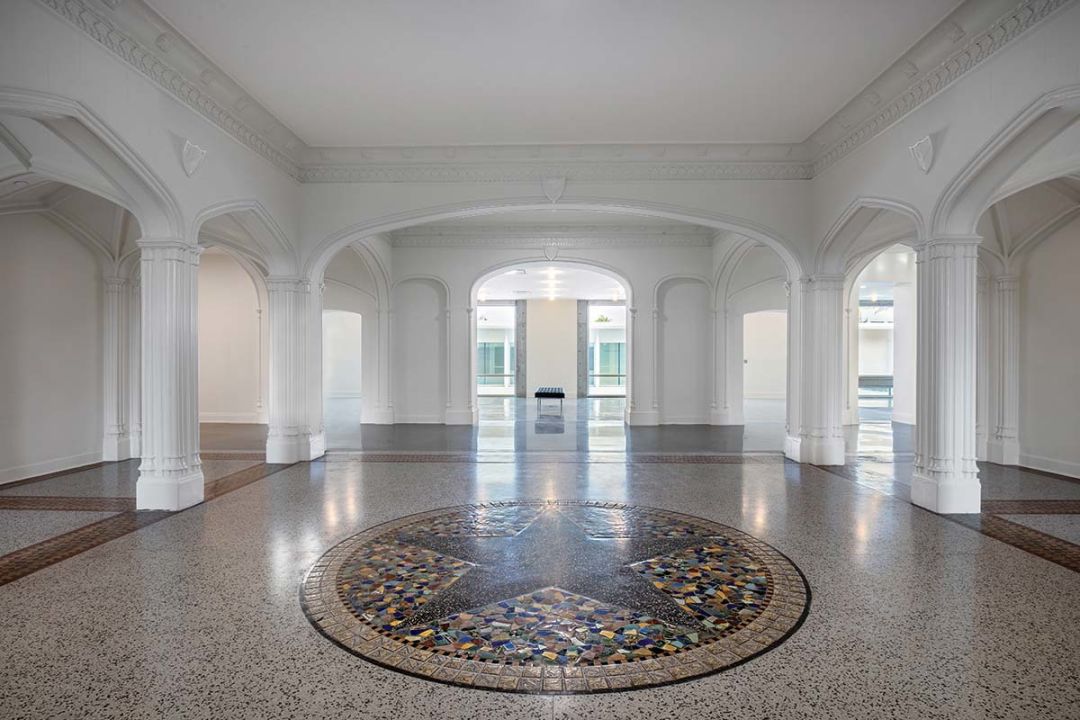
The intriguing Arts & Craft-era tile floor mosaic.
Image: Ryan Gamma
It’s been a long time coming. The historic Sarasota High building, with its Collegiate Gothic style design by M. Leo Elliott (now the Elliott Building), welcomed its last public school students 23 years ago. Its future was up for grabs, with numerous entities vying to take charge of it. Plans for a contemporary art museum—a “kunsthalle,” meaning a museum without a permanent collection that would focus instead on presenting, in this case, post-World War II to contemporary art—won out. Eventually the budding museum partnered with the ever-expanding Ringling College of Art and Design, so that the college’s continuing studies classes share space in the three-story redesign with the museum’s own educational efforts.
Along the way, the museum also acquired two adjacent properties, The Works, a former furniture showroom designed in 1959 by Sarasota School of Architecture luminary Victor Lundy (although Lundy’s original design was later, sadly, all but obliterated in later uses for the building); and then in 2015, the Rudolph Building designed in 1959, by acclaimed architect Paul Rudolph. The Rudolph adds 18,000 square feet to the overall space, housing classrooms, a café and a multipurpose meeting room.
Lawson Group Architects and architectural firm Keenan/Riley are responsible for the adaptive work on the Rudolph and the Elliott Building, which was named to the National Register of Historic Places in 1984.
And what a space that is. On a recent pre-opening tour with SAM executive director Anne-Marie Russell, we got a sneak preview of what visitors will discover themselves at the grand opening Dec. 14. (Classes have already begun on the campus.)
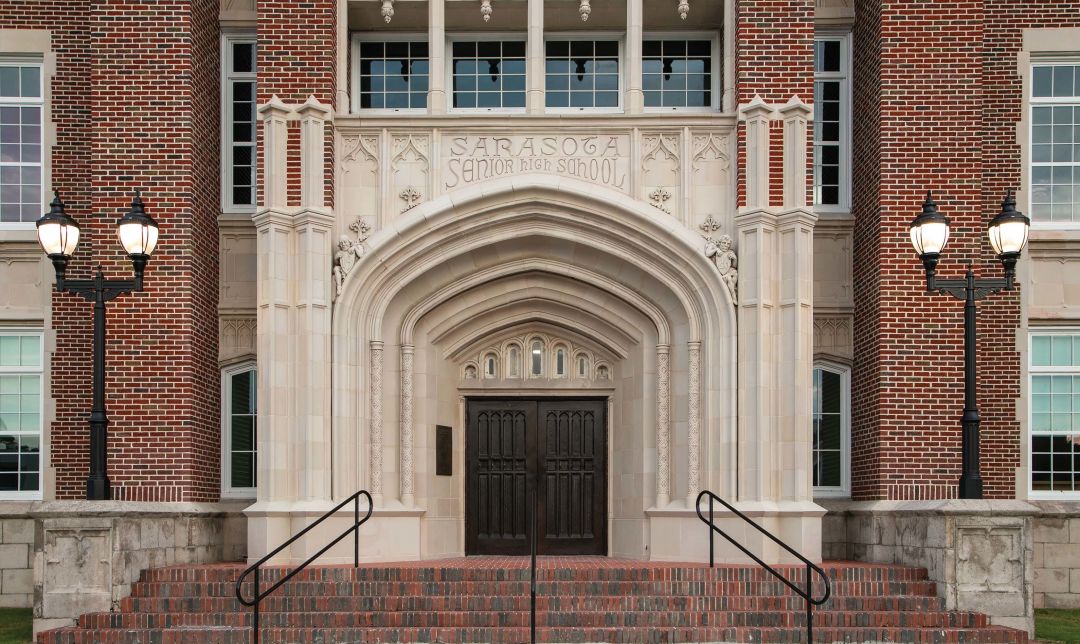
The former entrance to the Elliott Building (now the museum exit).
Image: Ryan Gamma
One enters the campus through a palm-tree-lined plaza, or courtyard, that “marries” the Elliott and the Rudolph buildings, as Russell puts it. Here, two sculpture installations, Celadon Landscape by Jean Shin and Zen Jail by JPW3 (J. Patrick Walsh III) welcome visitors. The property is fronted by a privet hedge shielding it from highway traffic, as well as a winding walkway, dubbed for now “The Meander.”
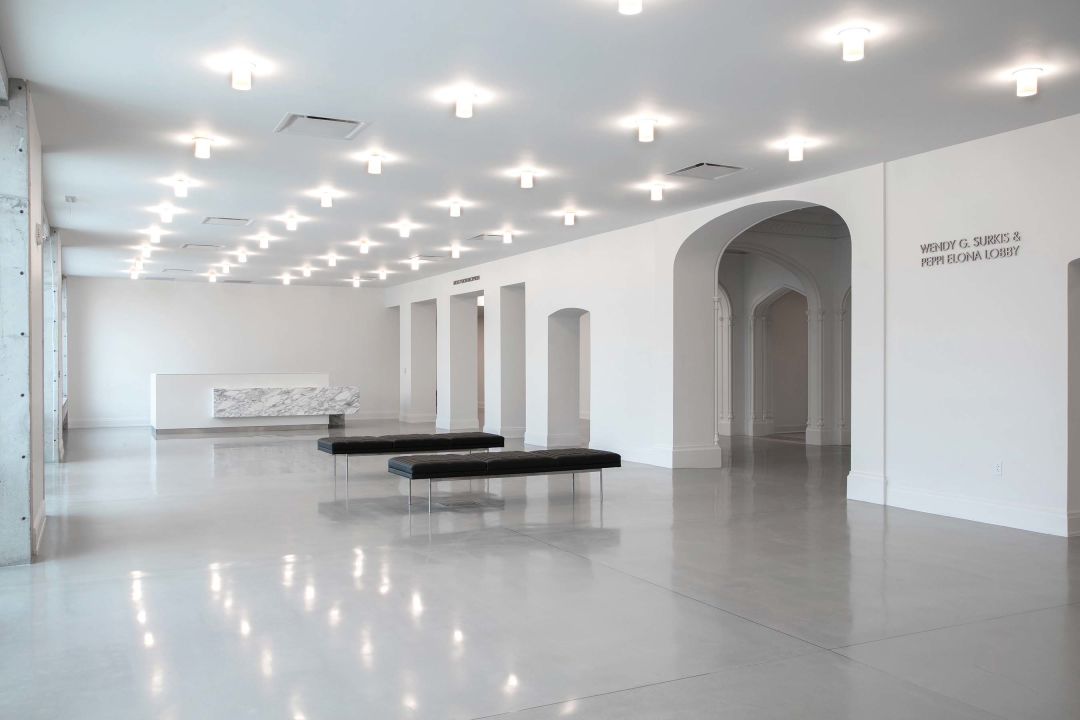
A view of the museum lobby.
Image: Ryan Gamma
Inside the Elliott Building, The Great Hall (the restored Sarasota High Foyer) and a museum shop selling jewelry, design items, artist multiples, books and more occupy the first floor space. On the second floor is a “white box” gallery, along with a coffee corner on the loggia overlooking the courtyard.
And on the third, one finds perhaps the museum’s most prominent feature, The Tower Gallery, a soaring cathedral-like space graced by natural light and featuring exposed brick to remind us of the building’s origins. This gallery will allow room for large-scale paintings, monumental sculptures and sweeping site-specific installations. There’s also a library, the “Conservatory,” a spot for visitors to read and learn.
Director and curator Russell emphasizes that SAM will be “dealing with globally significant art, made relevant to here. Education-wise, we will cover the whole span of history,” employing a lifelong learning approach to serve audiences at all stages of life.
“Art cultivates empathy and allows us to be united by our collective past, here in the present,” she adds. “And it implies a future.” In the multigenerational space that is home to the Sarasota Art Museum, all three come together.
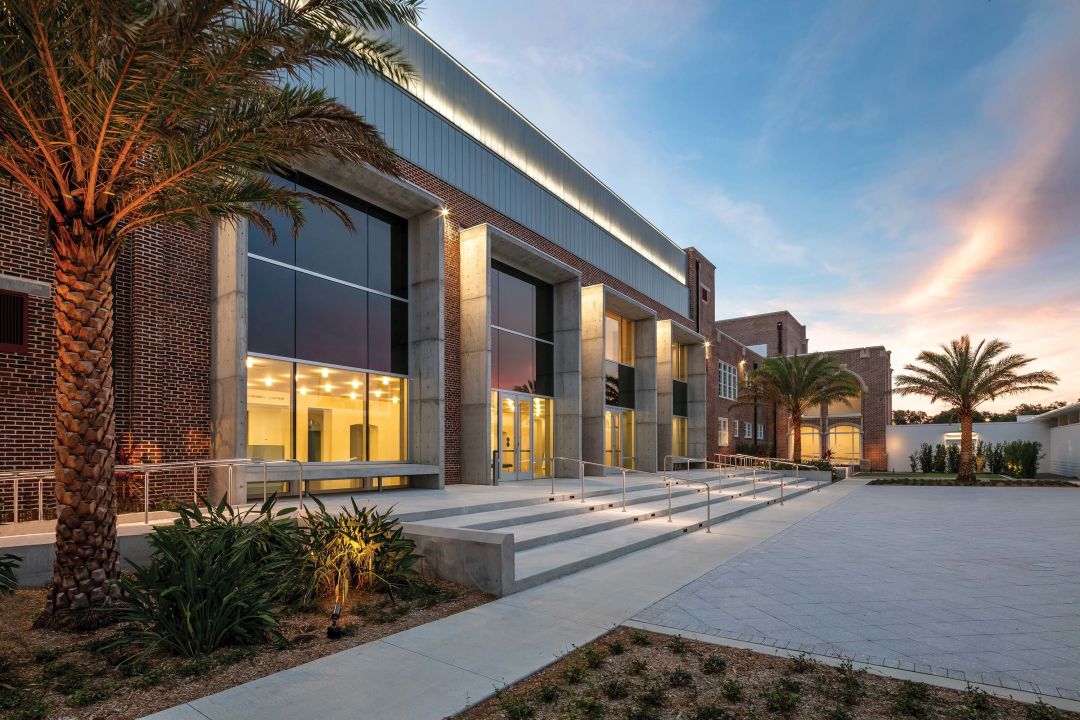
Image: Ryan Gamma
What You’ll See
SAM’s first exhibitions open this month. The second-floor galleries will host a large-scale retrospective of the work of internationally known Brazilian-born artist and photographer Vik Muniz—an “ideal choice to introduce our new audiences to photography, appropriation, drawing and to art that is fundamentally about looking and seeing,” says executive director Anne-Marie Russell. On view through March 9.
On the third floor: the first iteration of Color: Theory & B/W, a group exhibition (on view through May 31). SAM will present an ongoing series of shows that explore topics “of core and eternal relevance,” as Russell explains; color theory will incorporate optical science, literature, biology and more. The list of artists included was still being finalized at press time. Also on the third floor: a site-specific installation by artist Sheila Hicks, whose innovative works usually involve textiles and weaving.
On the first floor, the museum hosts a permanent installation of both a historic timeline of the site and photographic portraits by Sarasota photographer Barbara Banks of the workers and artisans who have helped to build the museum. The Worker Project sprang from a conversation between one of the building’s contractors and a brick restorer reflecting on the connection between their work today and that of the original workers nearly a century ago. All told, it’s estimated that more than 700 workers have contributed to the restoration effort.
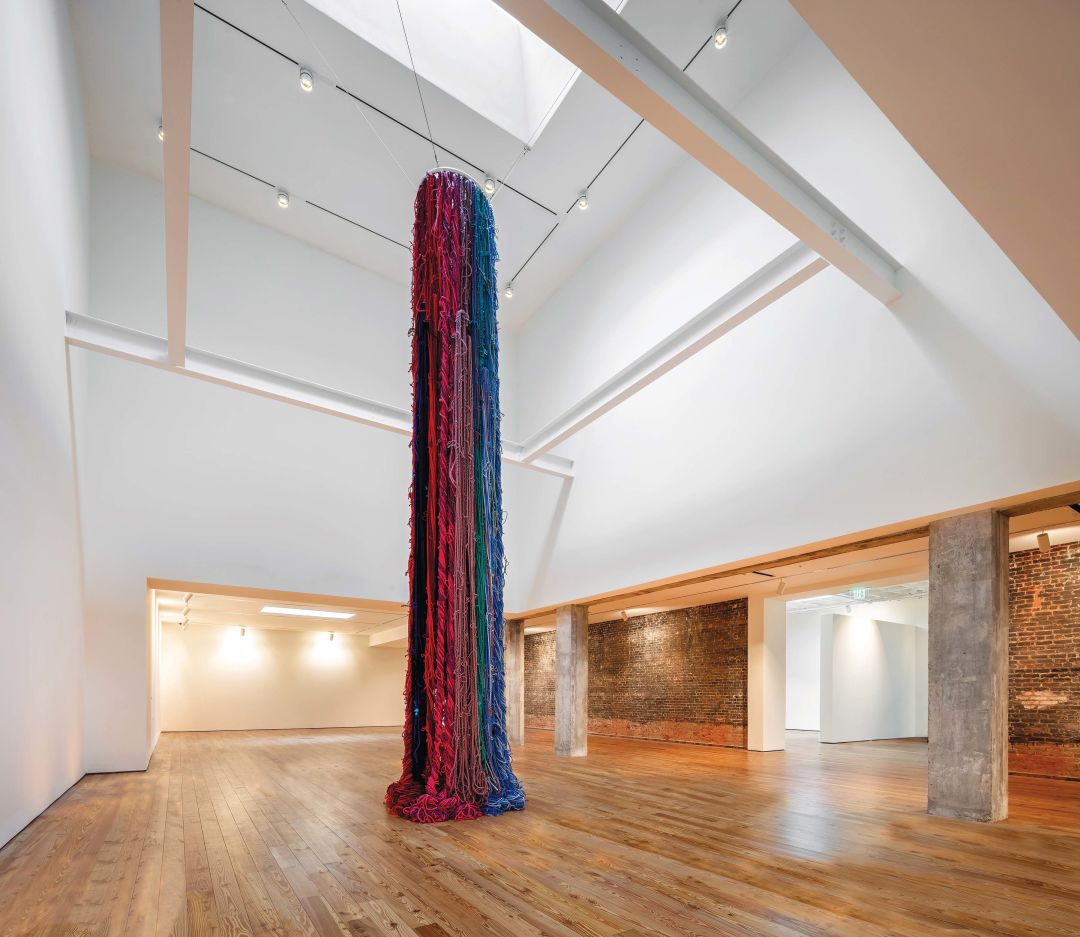
Questioning Column by Sheila Hicks.
Image: Ryan Gamma
Fun Facts
The restoration of the old Sarasota High building preserved most of the original 100-year-old Florida longleaf heart pine used in its joists, adapted for the museum’s floors. Actually, the pine could be much older than that, up to 600 years old, but was harvested for SHS in the 1920s from forests near Parrish in Manatee County in a bygone community called Willow.
The intriguing Arts & Craft-era tile floor mosaic visitors can study under their feet as they depart the museum has been carefully restored. Executive director Anne-Marie Russell says there is more research to be done on who first created the mosaic and its inspiration.
The terra cotta pieces over the old high school’s entry doors (now the museum exit) were restored by a team of artisans from Puebla, Mexico, who have carried on the tradition of this work over generations.
The 1960s-era Paul Rudolph Walkway (or canopy) that shades the new approach to the museum was at risk of being removed during the restoration process, until the Sarasota Architectural Foundation, the school board and private donors collaborated to renovate the 235-foot concrete structure in place.